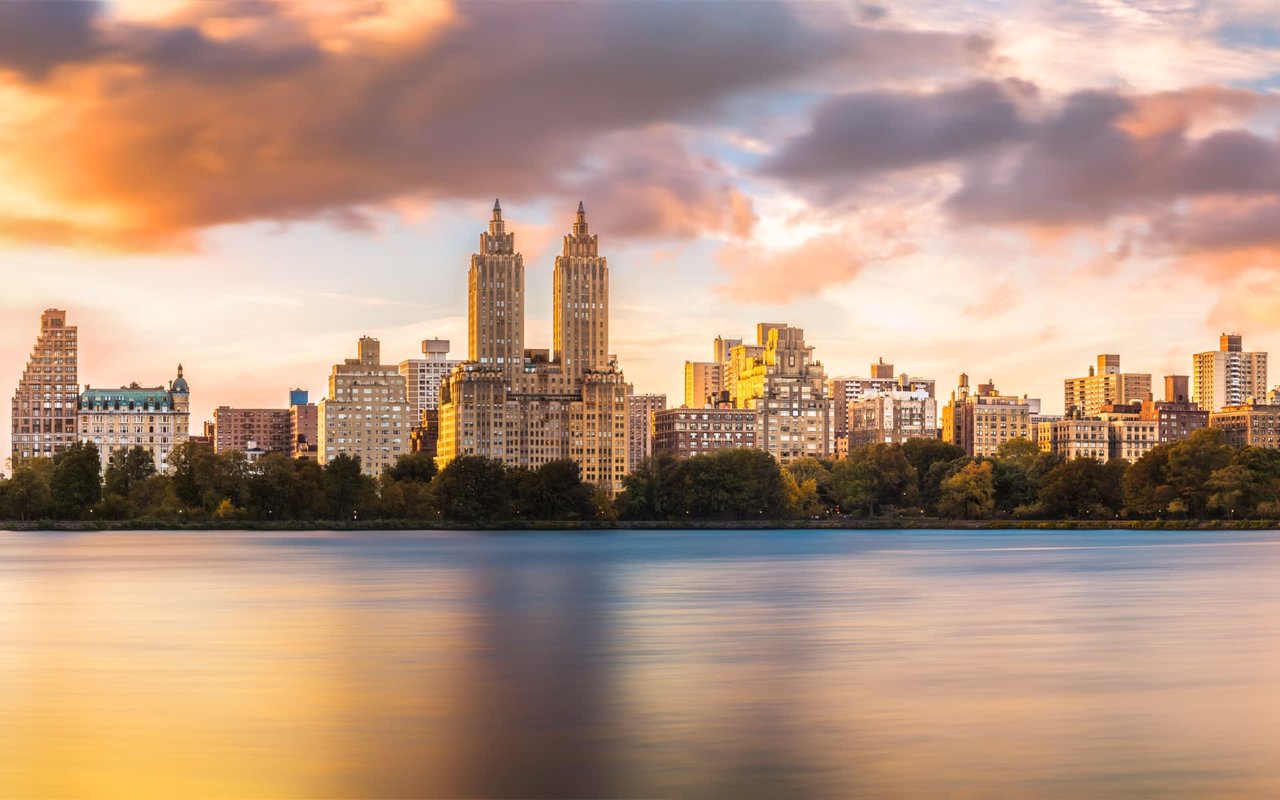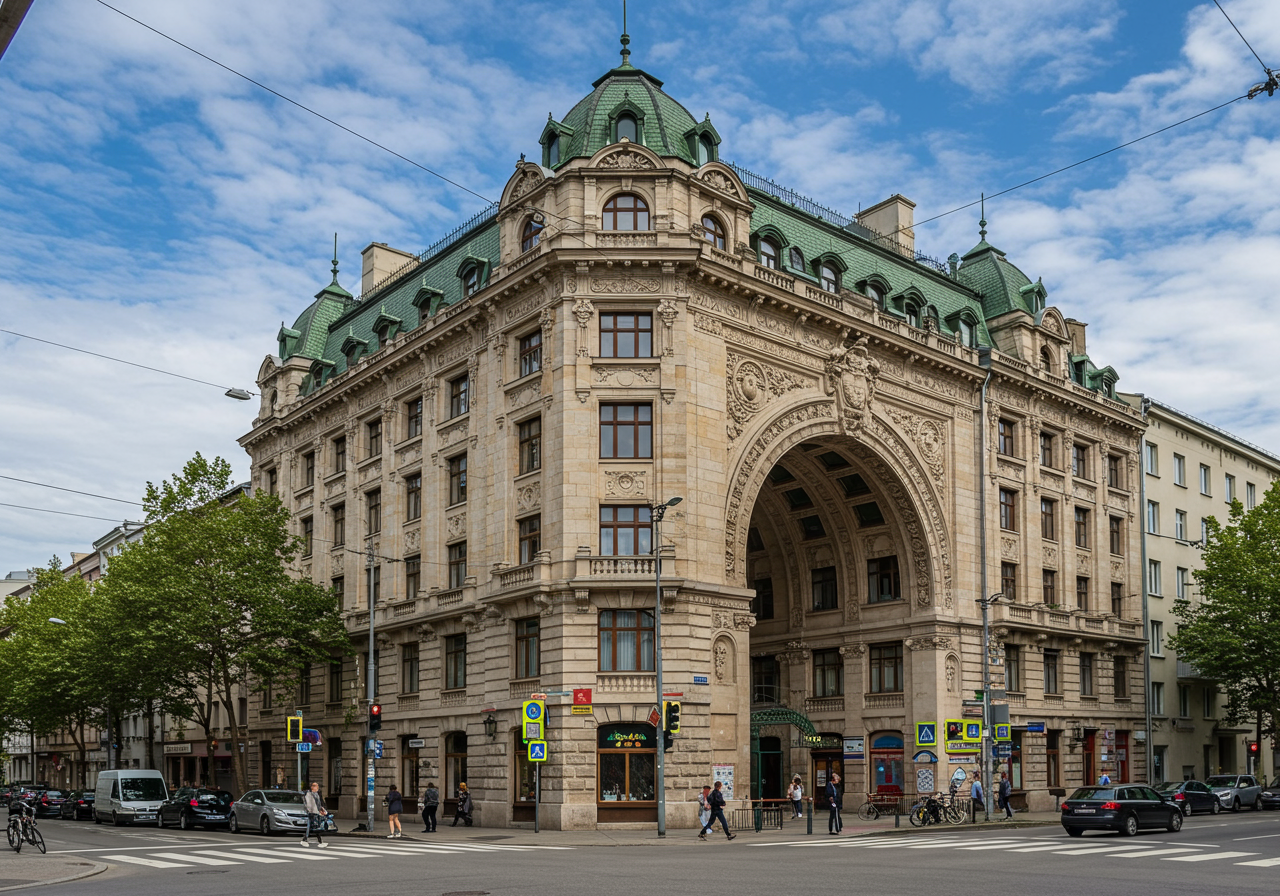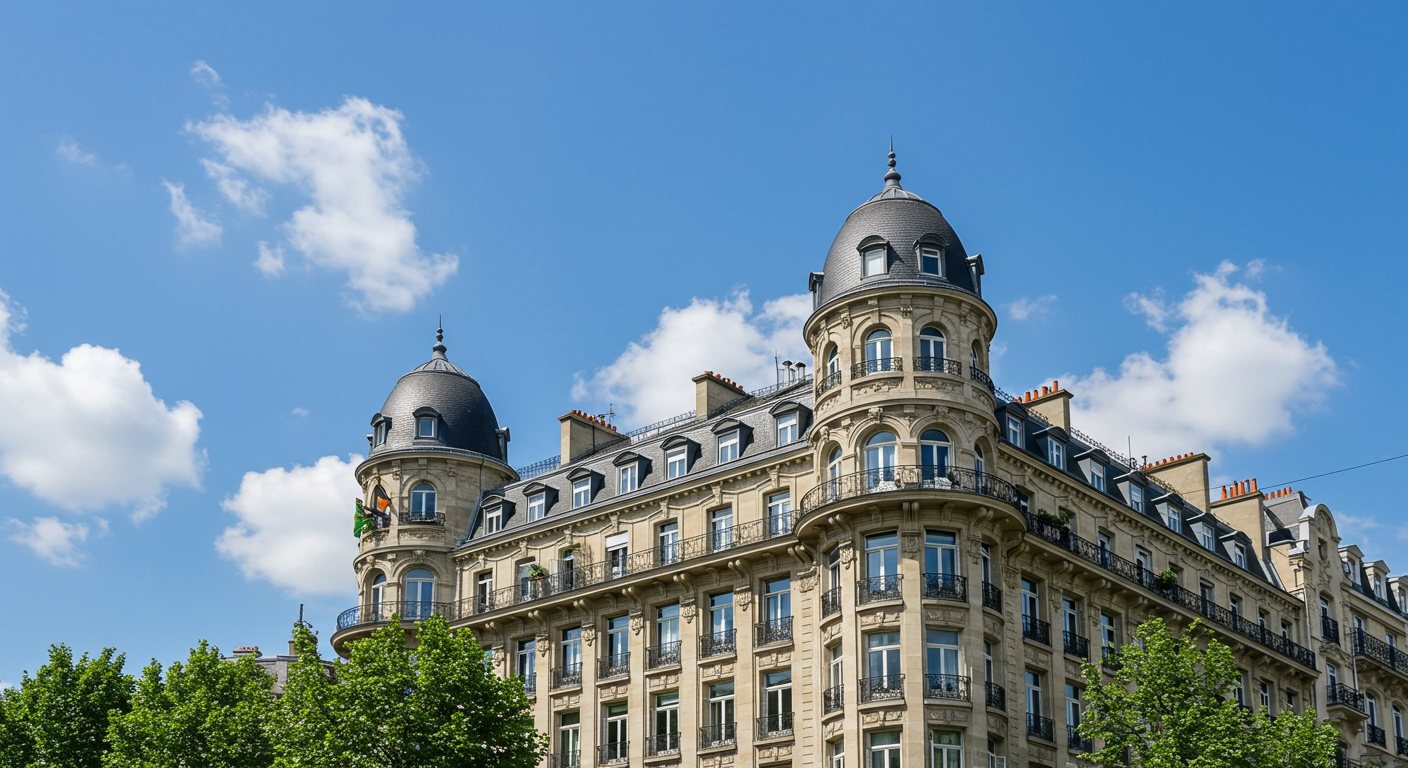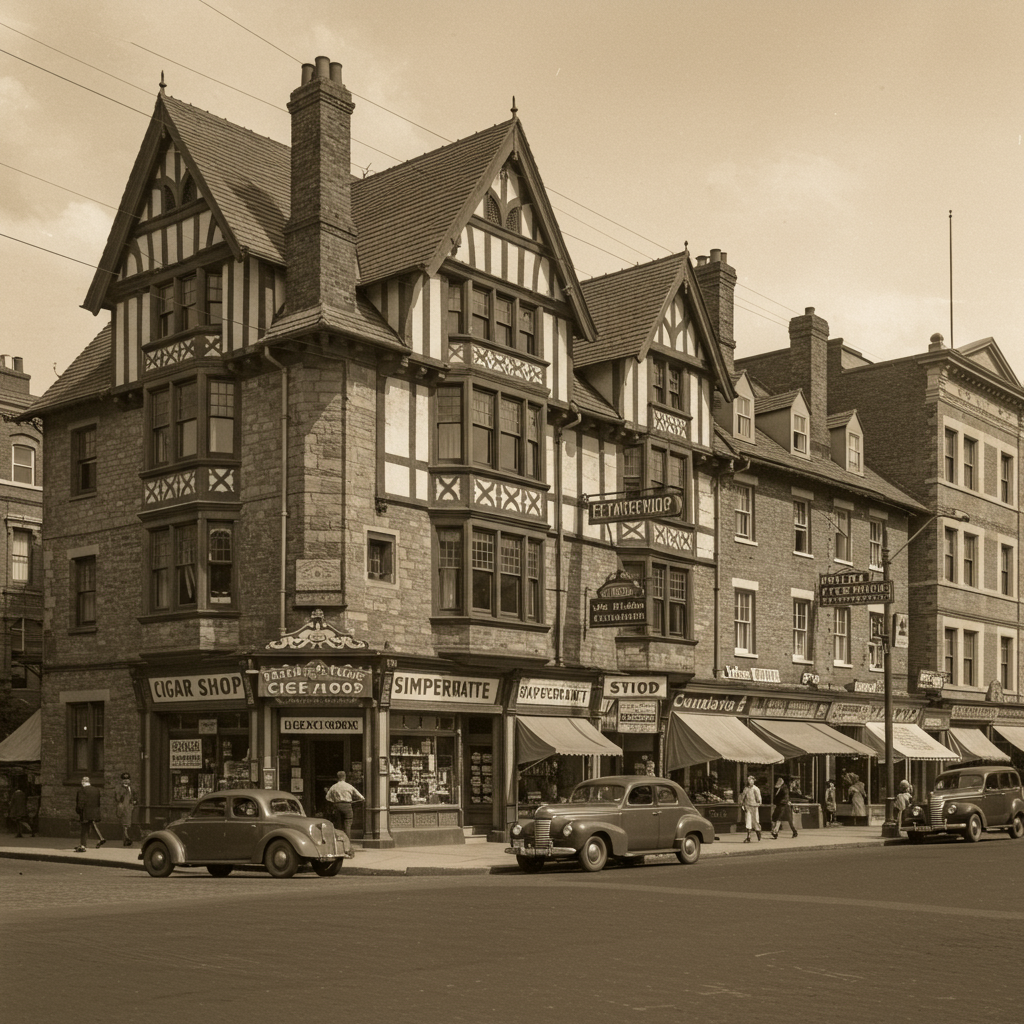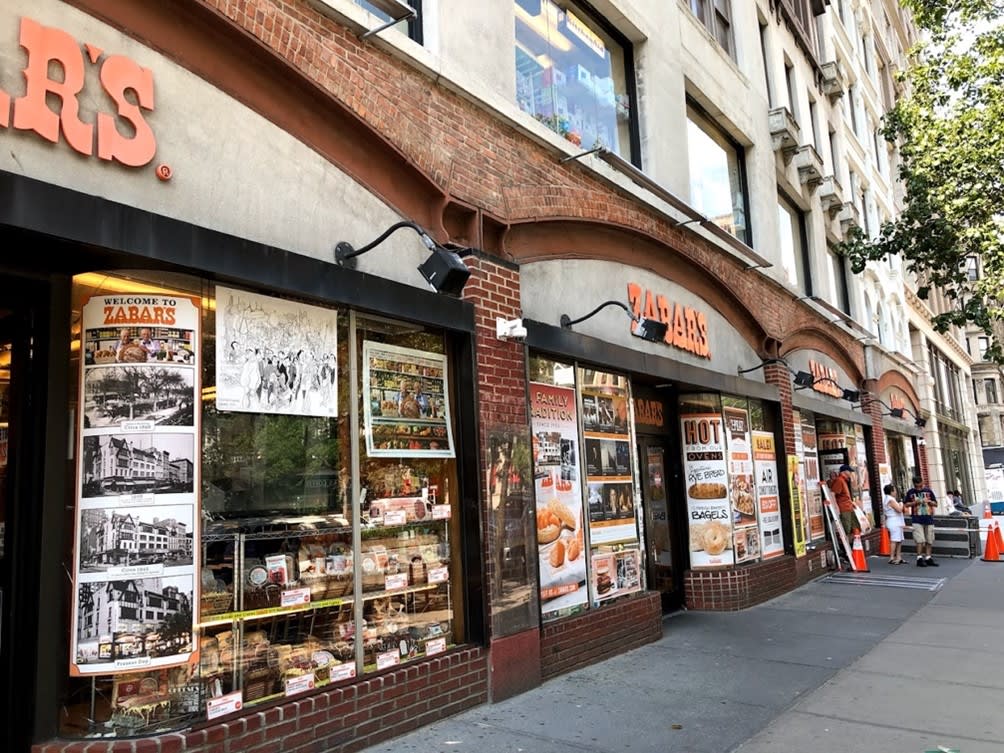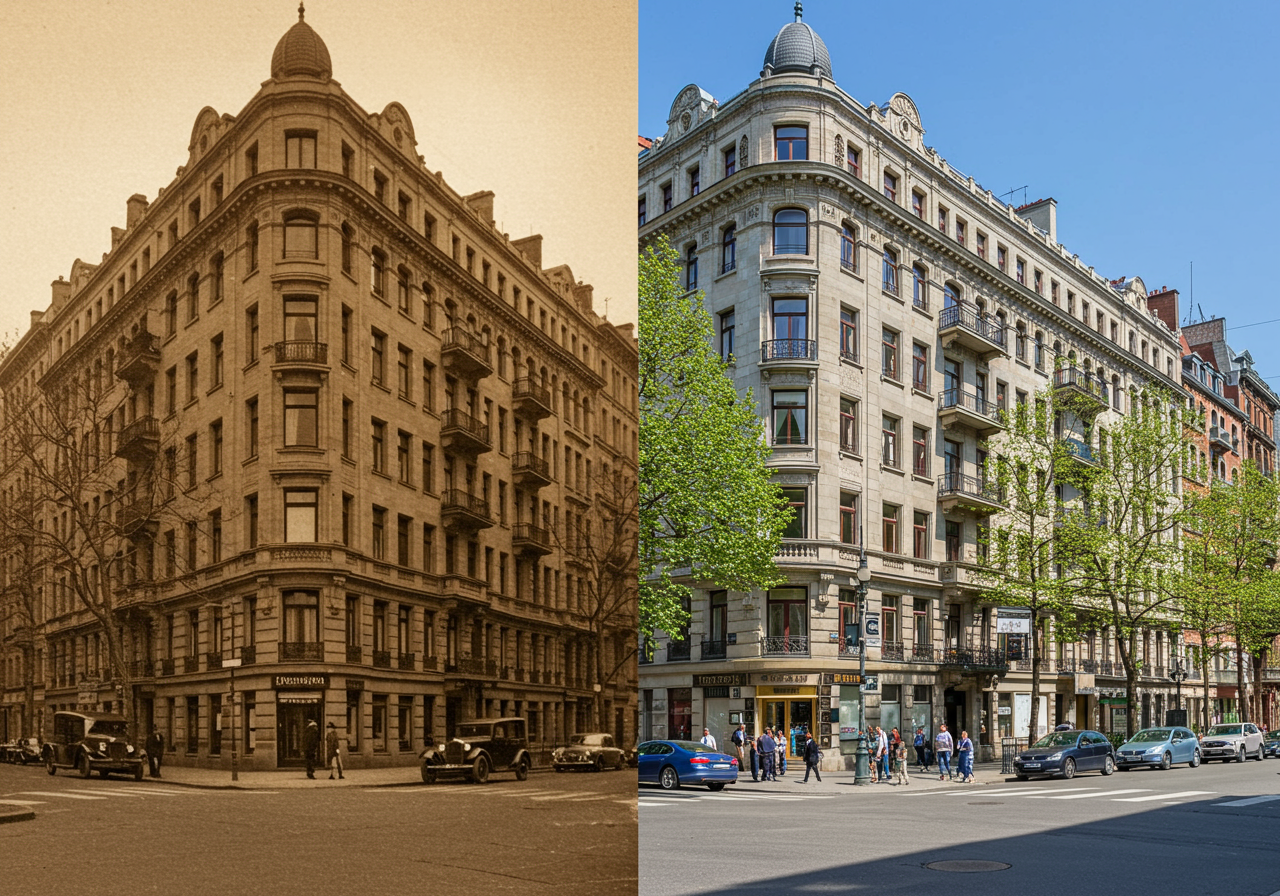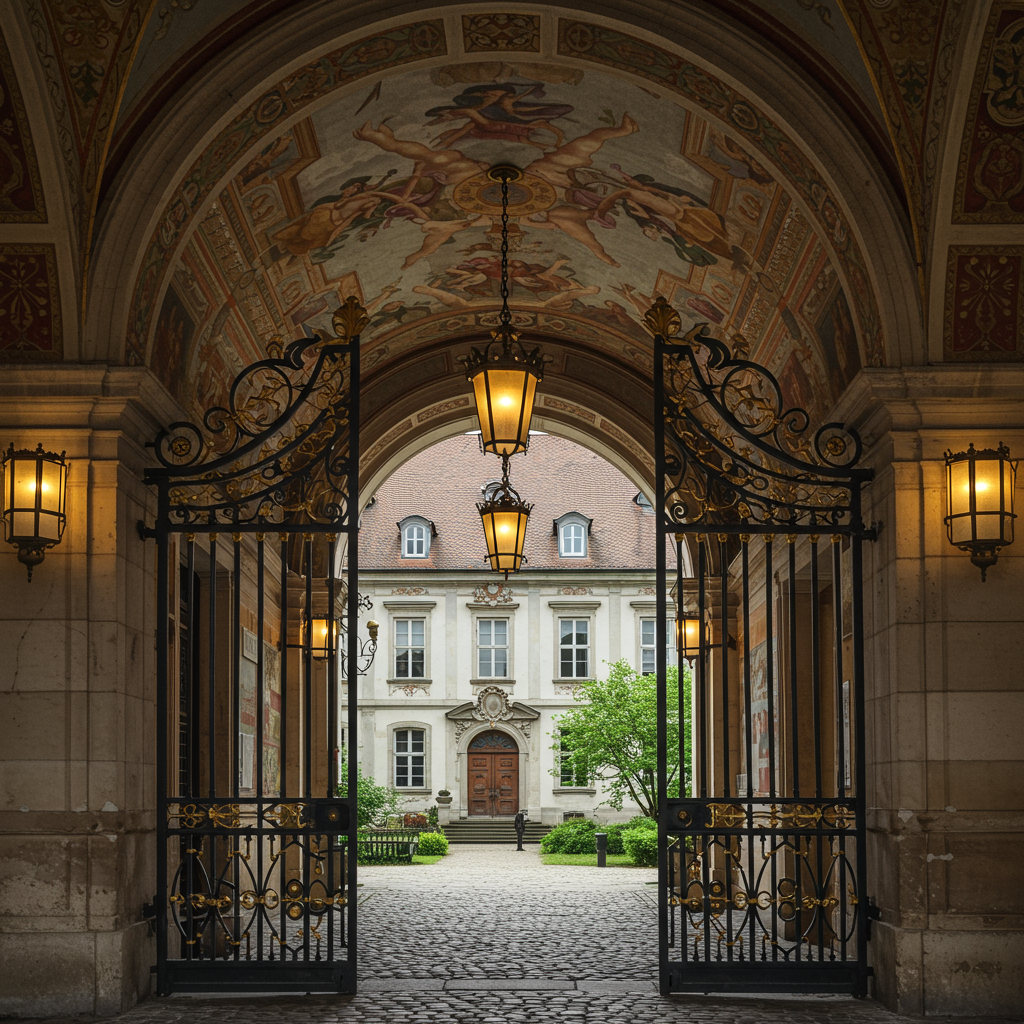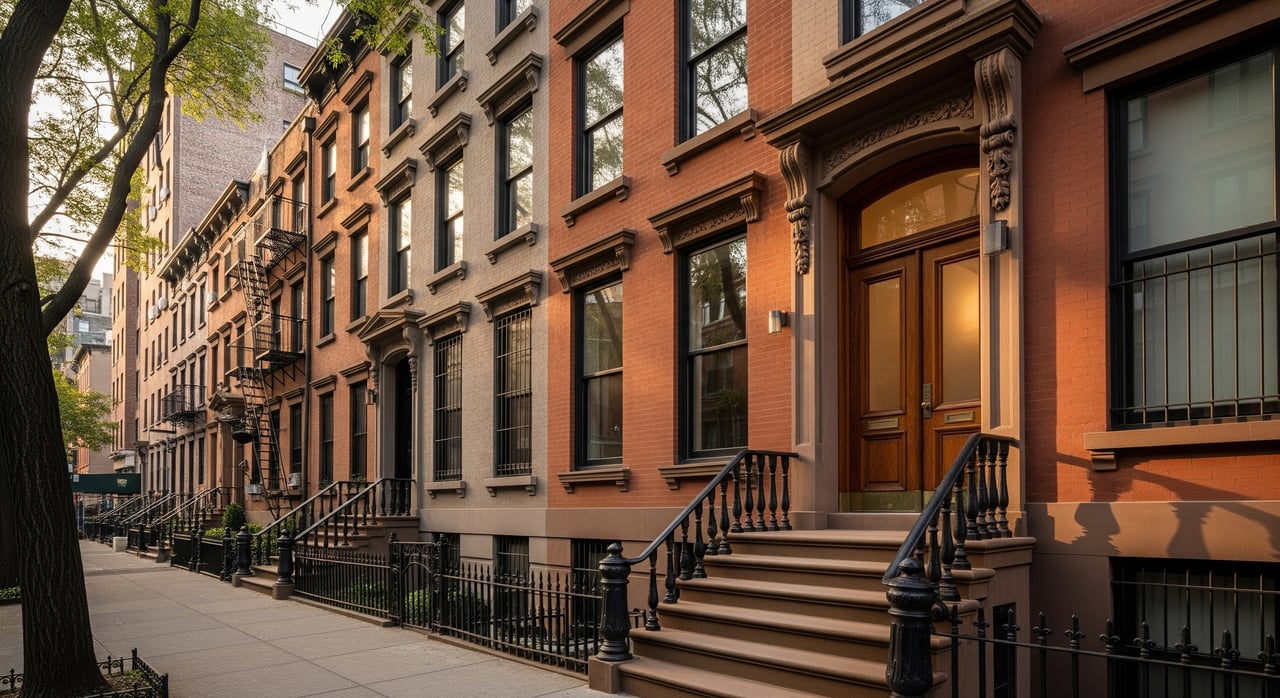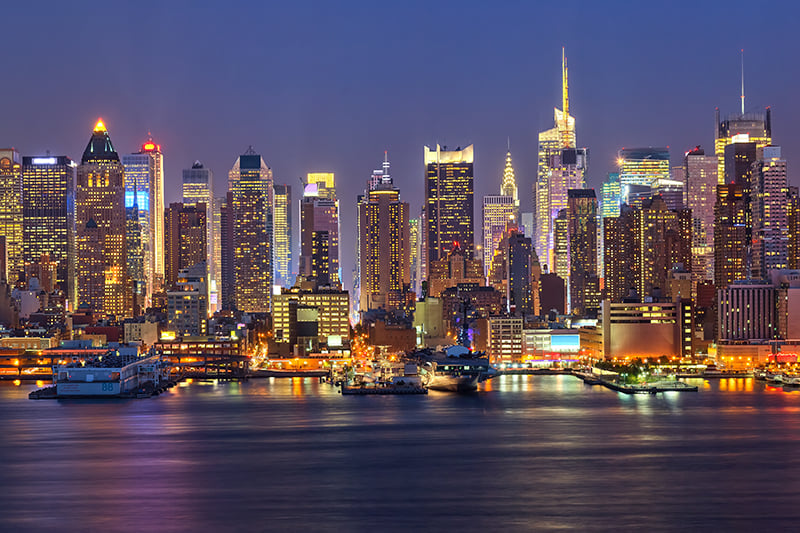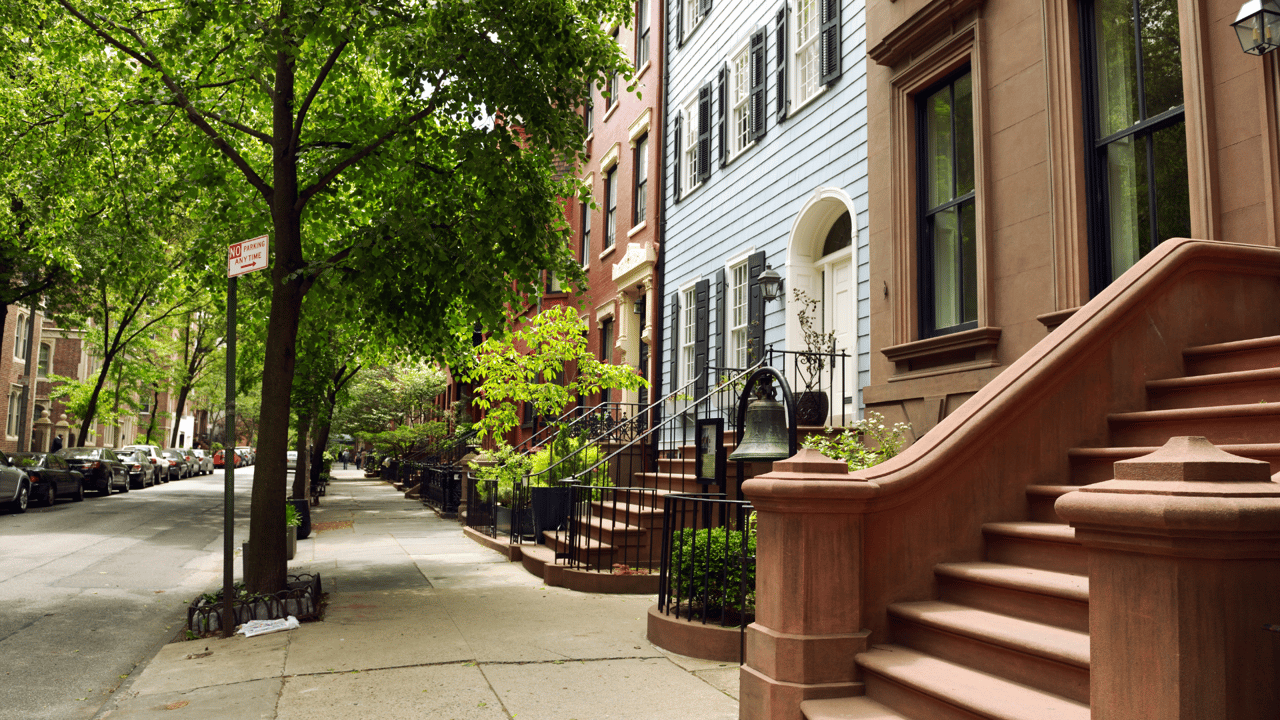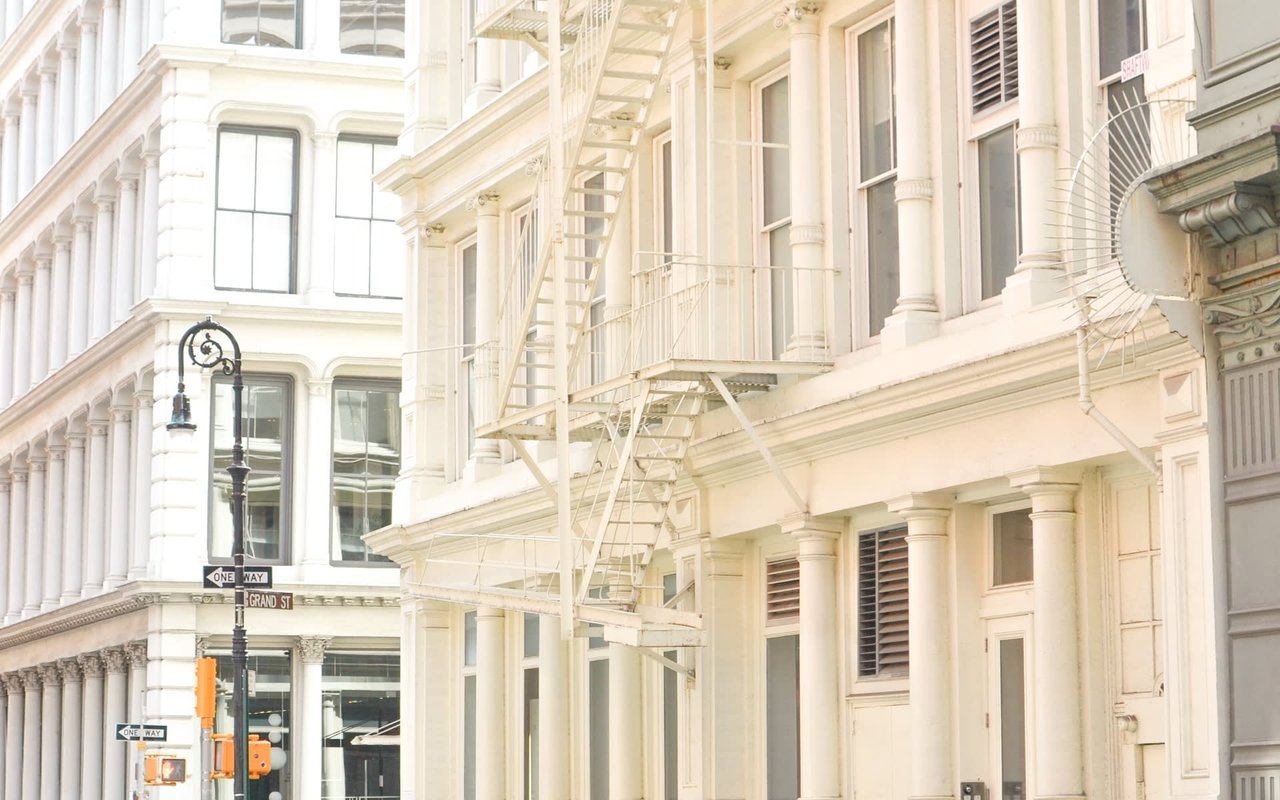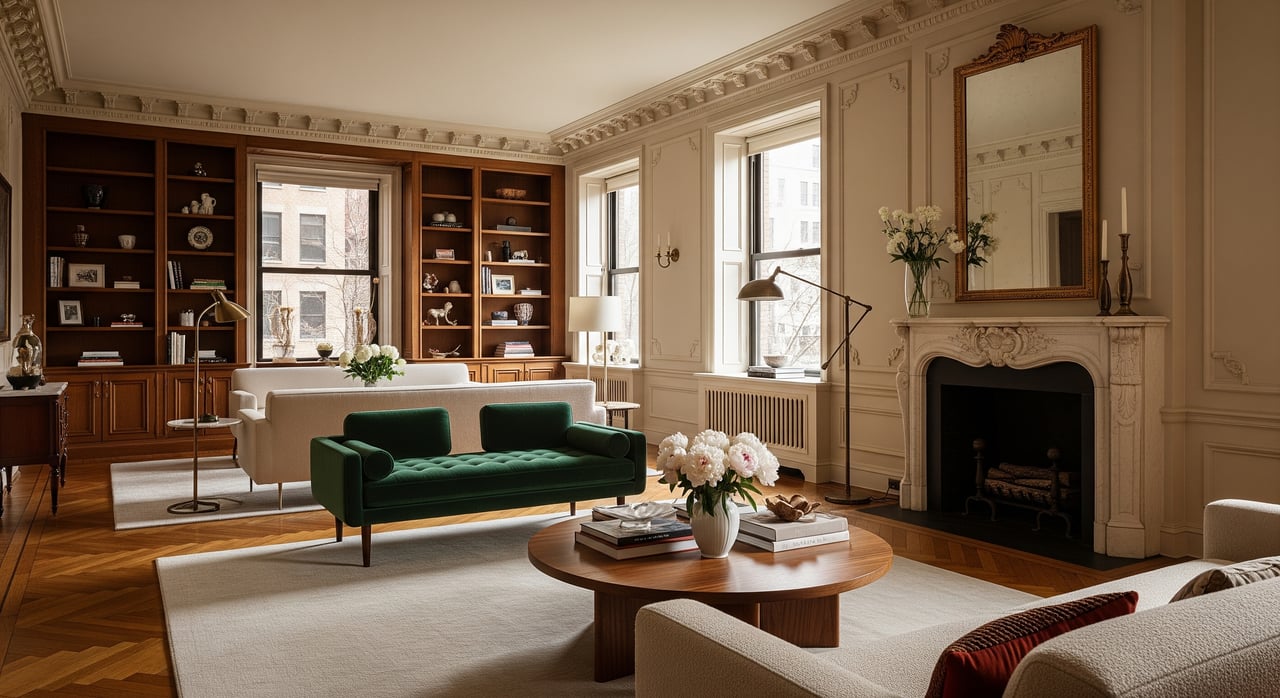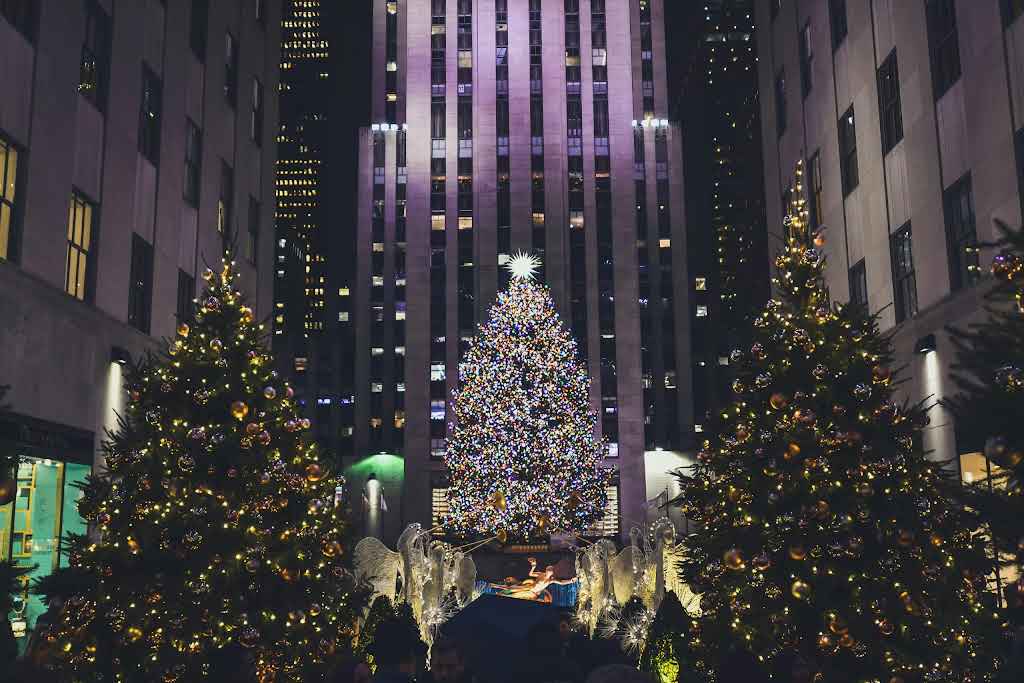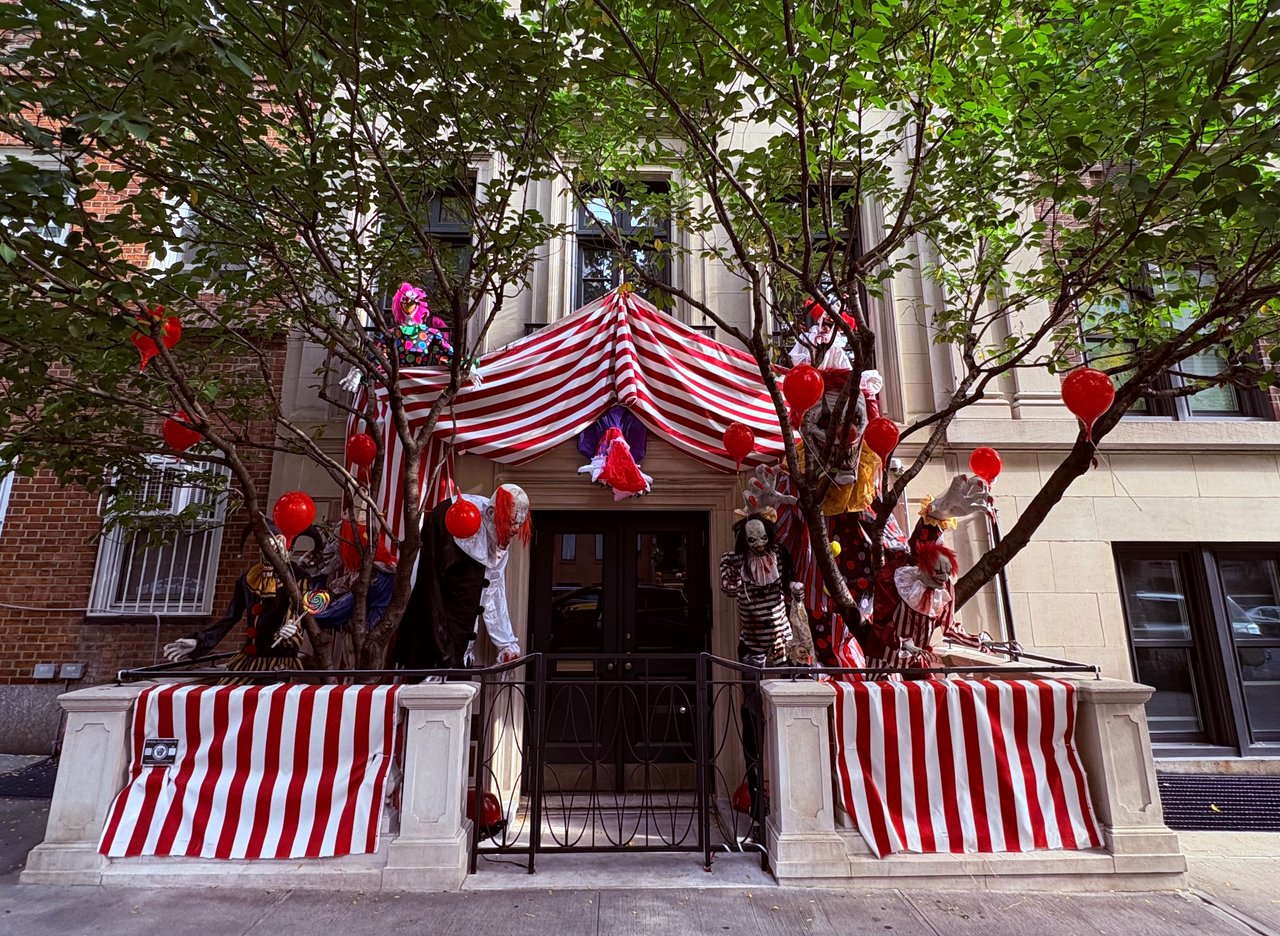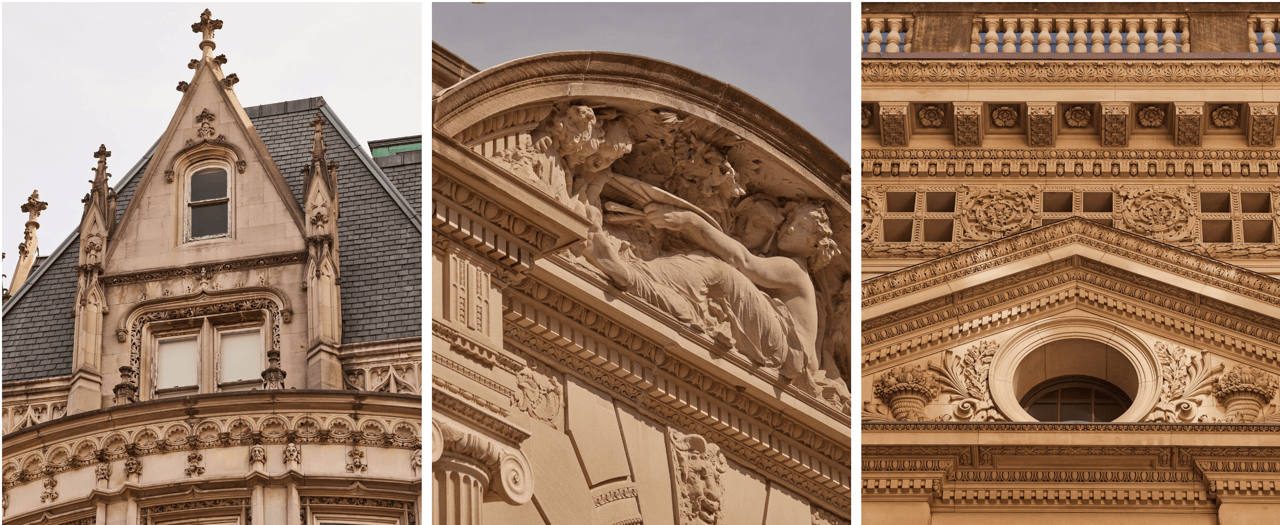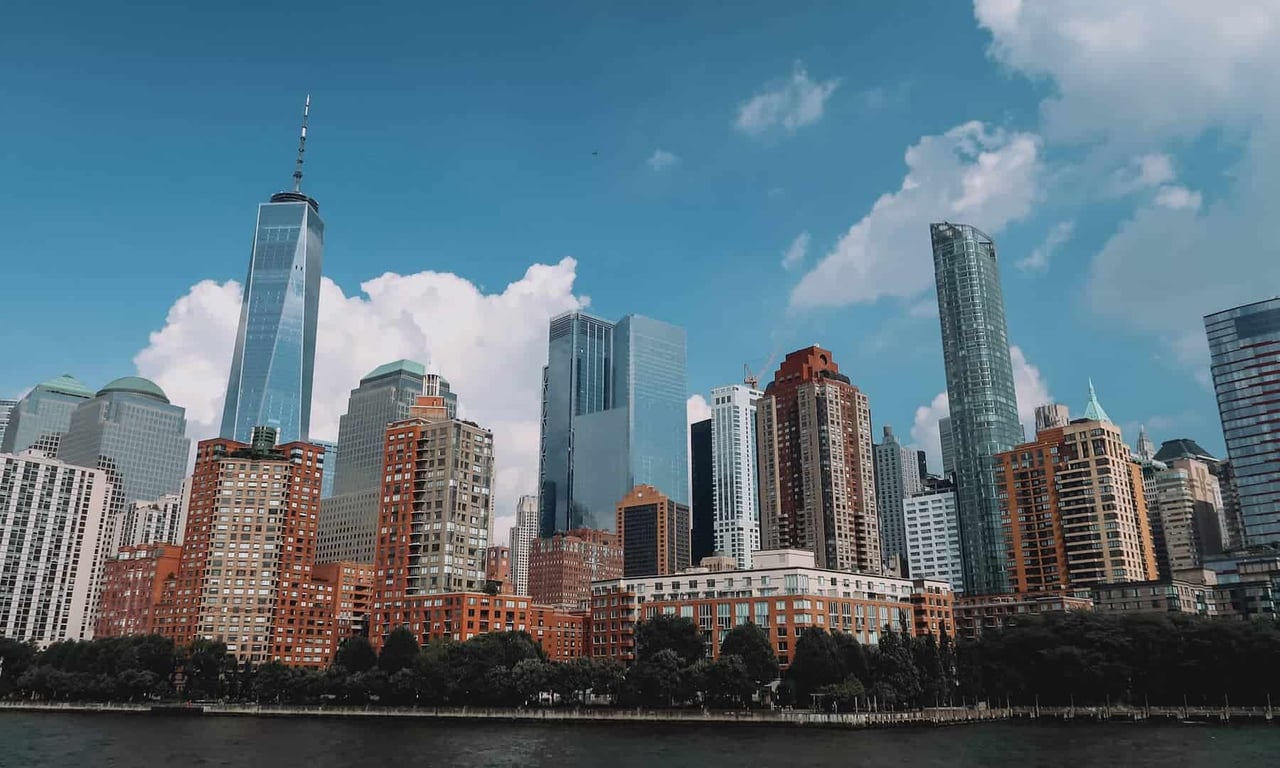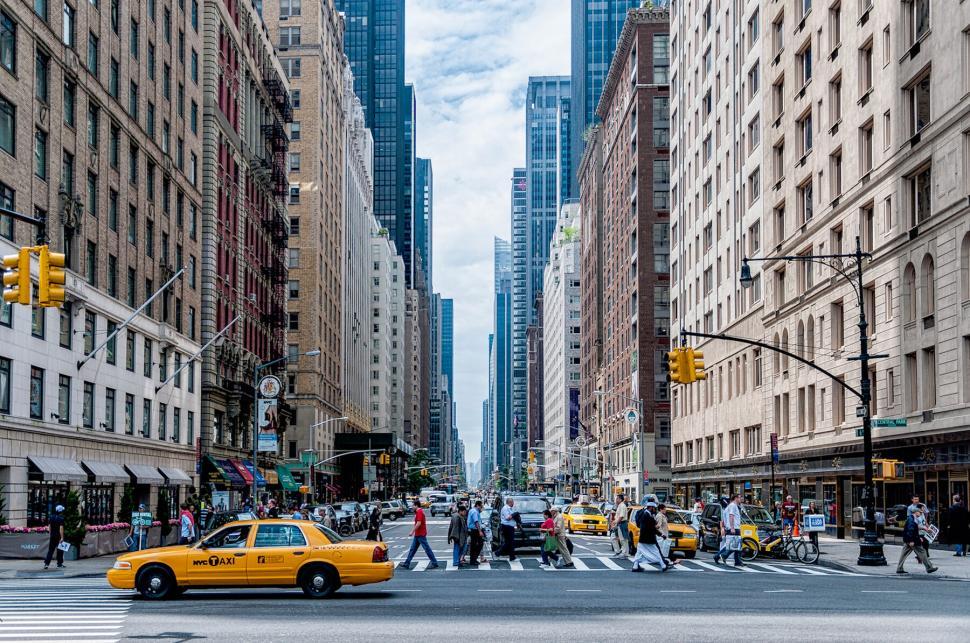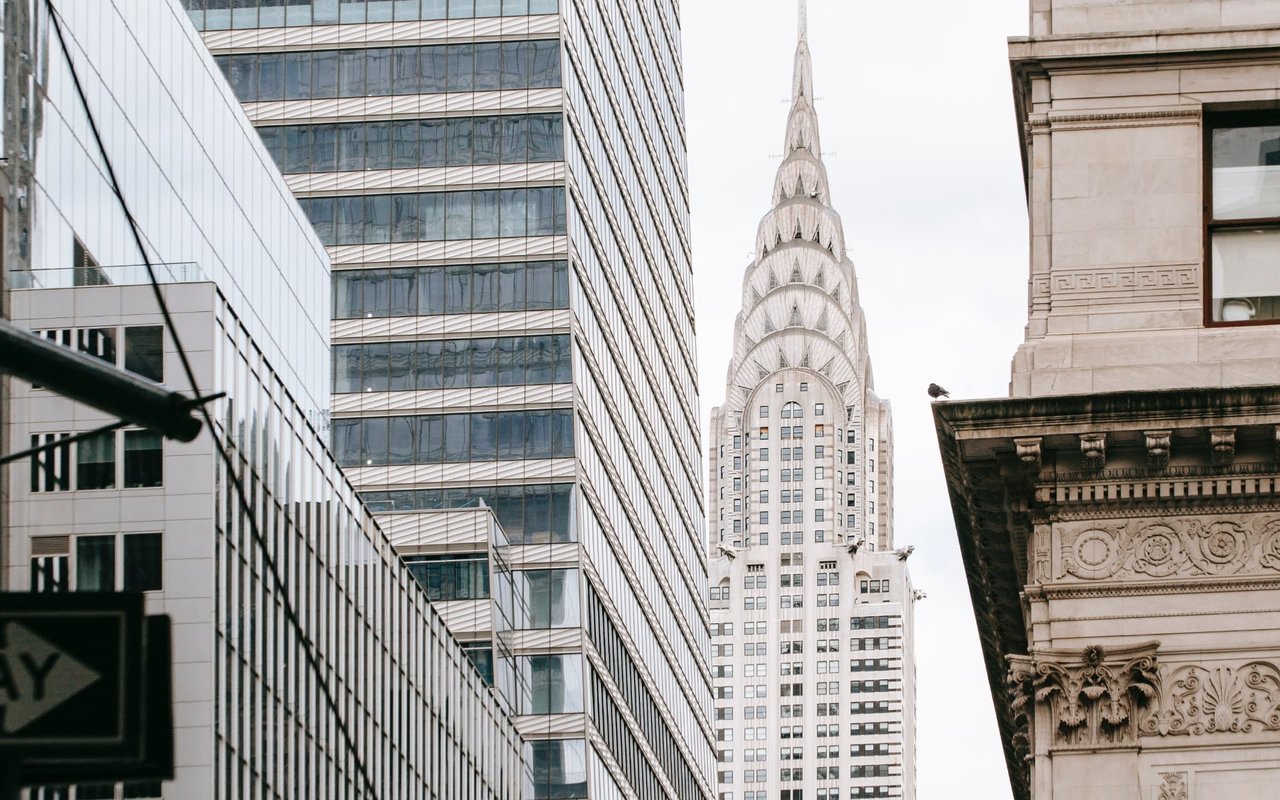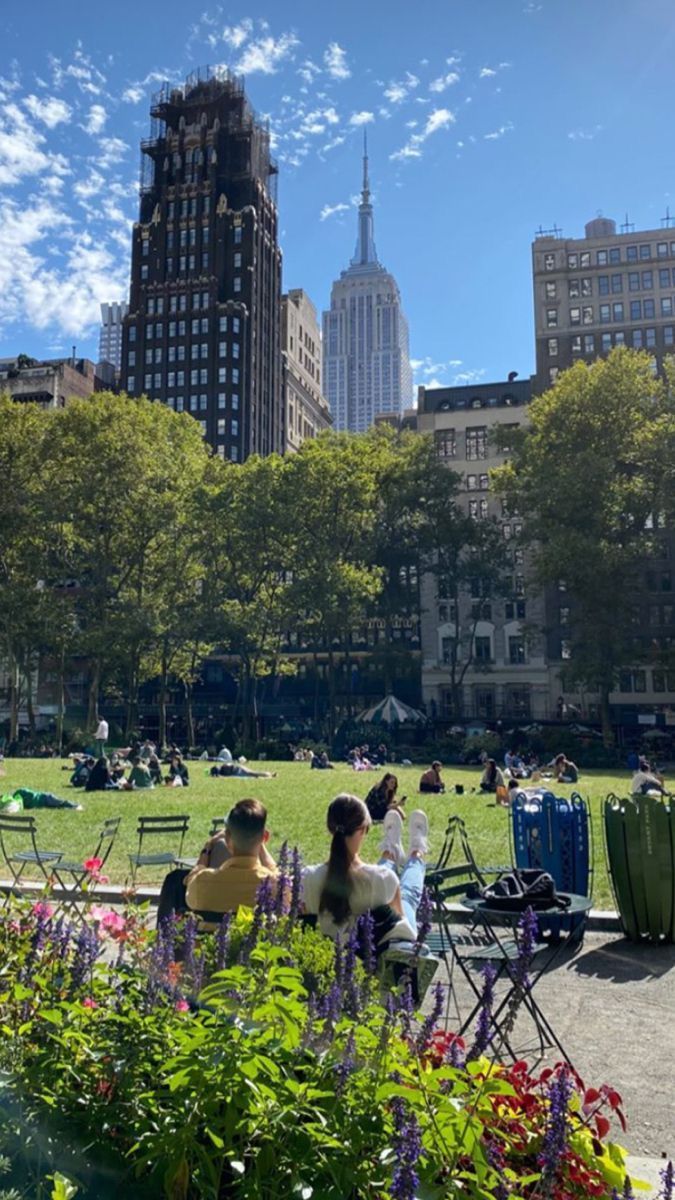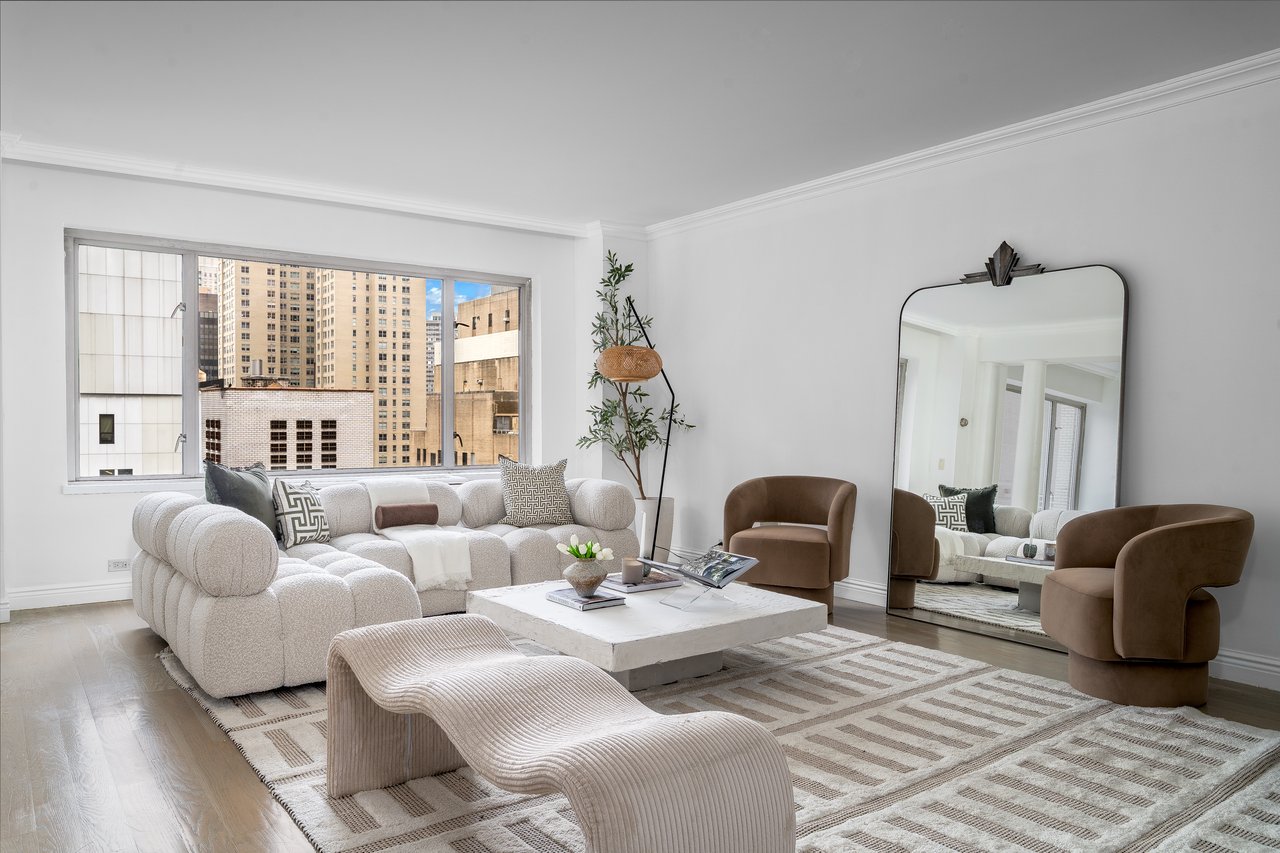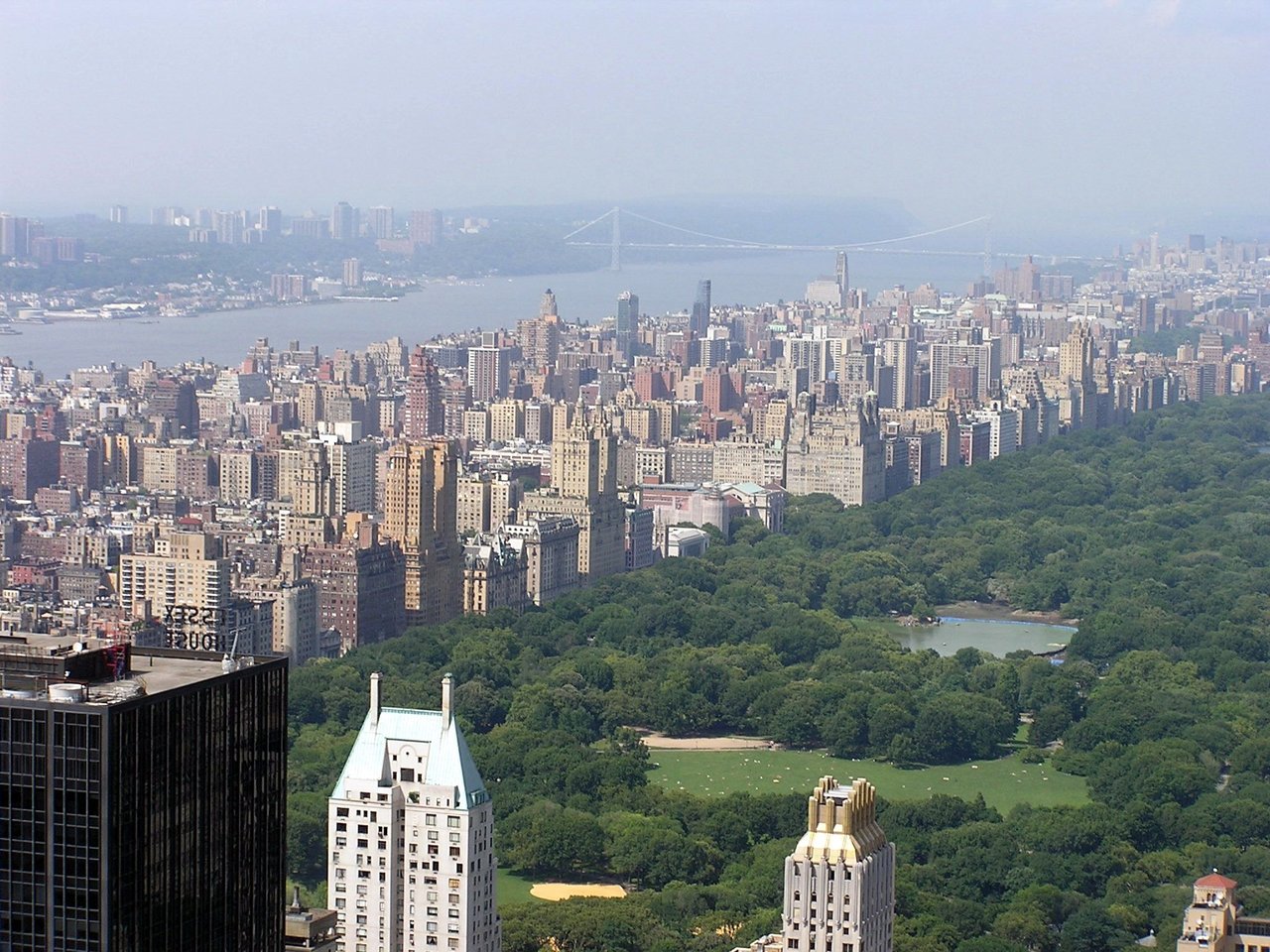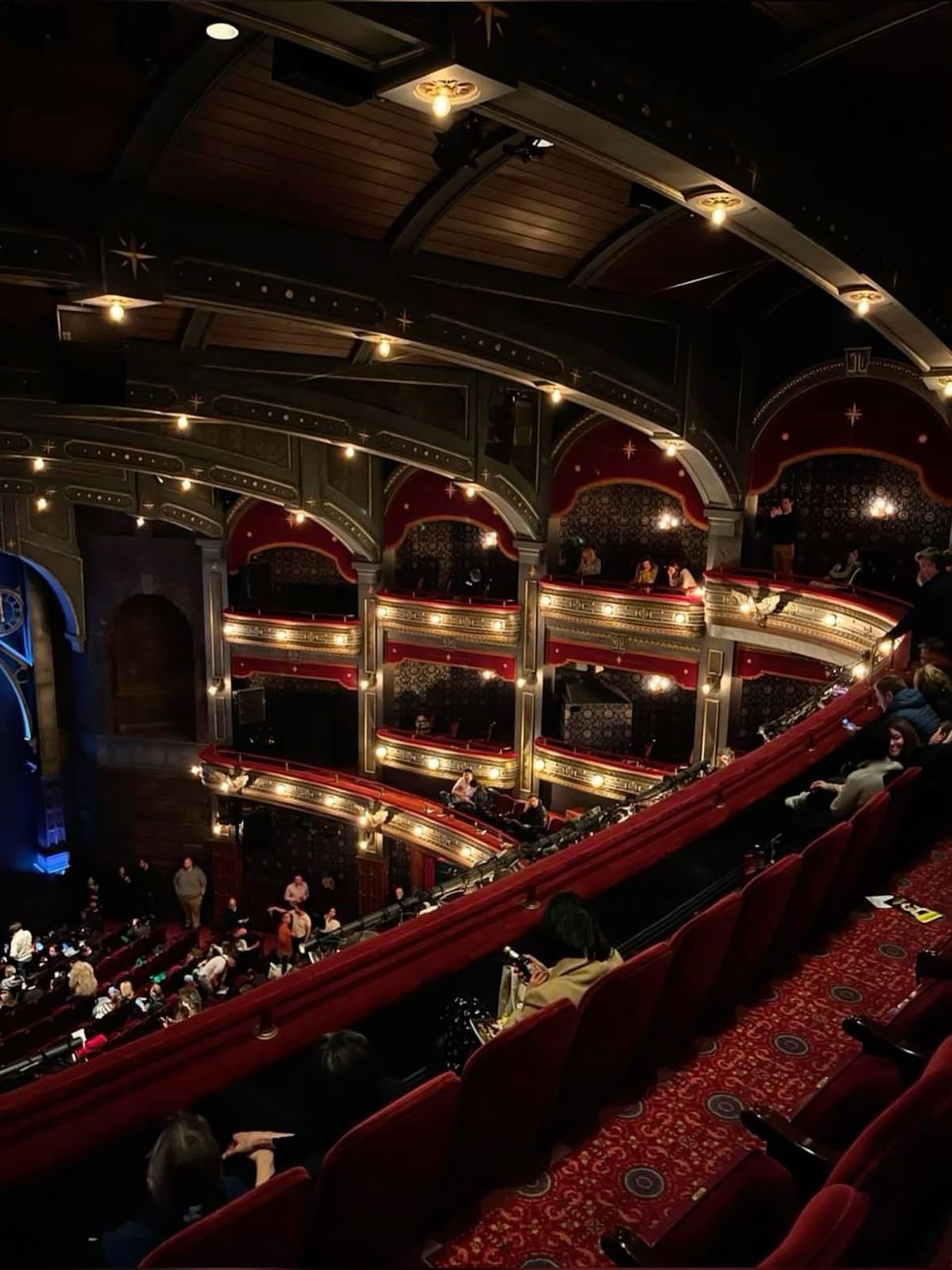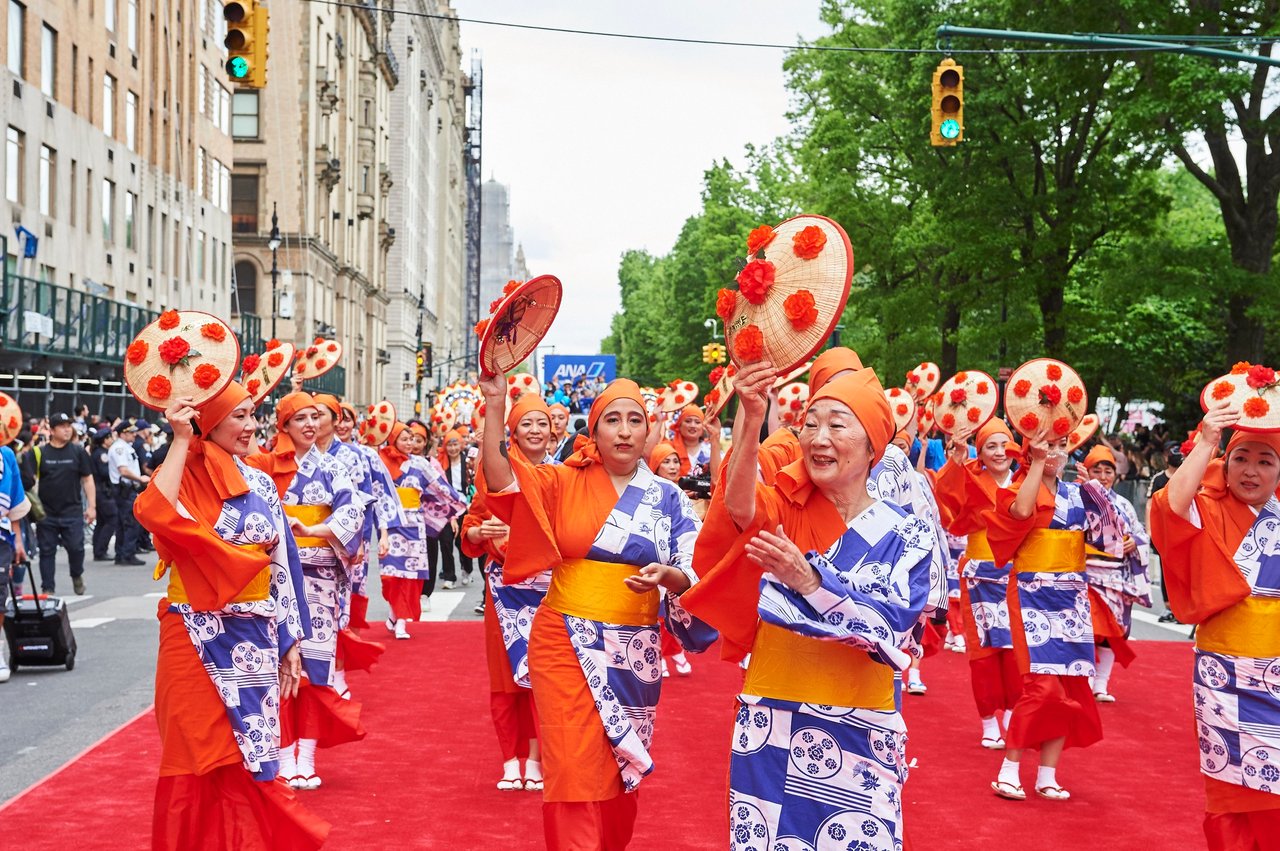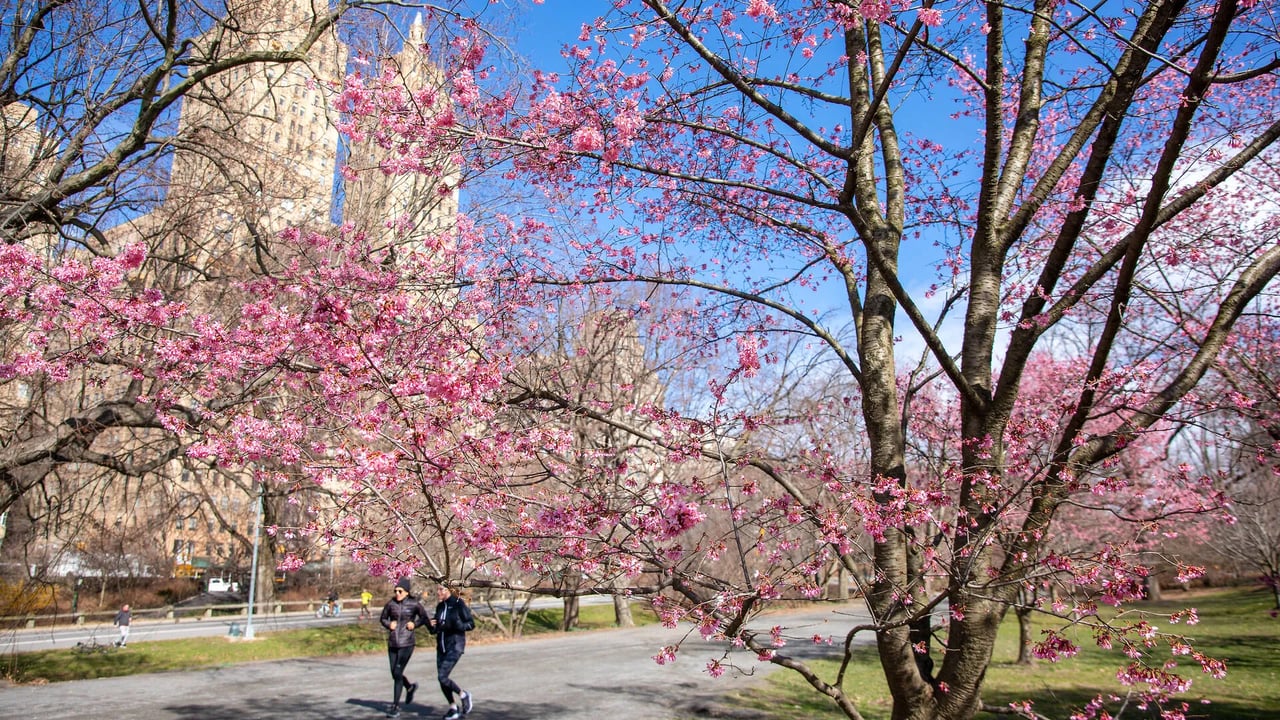We all know the Upper West Side is more than just a neighborhood; it's a treasure of architectural gems, each with captivating stories to tell, and a testament to the city's rich heritage and long-lasting charm, just waiting to be explored. Embark on an expedition through the streets you know and love, and discover the hidden histories of the iconic landmarks that define this unique corner of New York City. From grand apartment buildings to historical monuments: our Upper West Side!
The San Remo, 145-146 Central Park West
We begin our tour outside the 81st Street Subway Station (★). Head south along Central Park West Until you arrive at the famous San Remo (1). Standing proudly between 75th and 74th Streets, The San Remo is an iconic landmark apartment building with a rich history. Originally constructed between 1929 and 1931 as a rental apartment building, it was converted to a co-op in the 1970s and offers its residents unparalleled views of Central Park, making it a coveted address on the Upper West Side.
Designed by renowned architect Emery Roth, the mastermind behind the nearby Beresford, The San Remo boasts a beautiful Beaux-Arts style, complete with marble walls and terrazzo floors. The building's two towers feature English Baroque mansions beneath structures inspired by the Choragic Monument of Lysicrates. Although beautiful, the towers also have a functional use: they hide the building’s water tanks.
During the Great Depression, the development faced financial challenges, leading to the sale of both buildings together for a mere $25,000 – an amount that wouldn't even cover the cost of a small storage space in the present-day San Remo.
Throughout the years, the San Remo has remained a sought-after residence for countless celebrities, including Steven Spielberg, Dustin Hoffman, Tiger Woods, Demi Moore, Bruce Willis, and Bono, among others who have called it home.
As you look up at the towers, see if you can spot any asymmetries. They actually contain a small bulge on their western face (not that many would notice). The floors of the south tower are also larger.
Photo by Ajay Suresh, licensed under CC BY 2.0
The Dakota, 1 W 72nd Street
Continue your journey south towards the intersection of Central Park West and 72nd Street, where you'll arrive at the Dakota (2), an iconic residential building recognized for its fortress-like architecture. Constructed between 1880 and 1884 under the guidance of renowned architect Henry Hardenbergh, the Dakota, so named because the developer's friends told him the site was so far north that it might as well be in Dakota territory, stands as New York City's oldest remaining luxury apartment building.
The Dakota's historical significance is further accentuated by its famous residents, including Lauren Bacall, Boris Karloff, Judy Garland, Leonard Bernstein, and William Inge, but none are more famous than John Lennon and Yoko Ono. Tragically, Lennon was assassinated outside the building's gates in 1980. Yoko Ono still resides there, and the site has become a popular destination for tourists and Beatles fans alike.
Combining elements of North German Renaissance and French architectural styles, the Dakota features a unique design with brick and sandstone walls, terracotta panels, and balconies. In acknowledgment of its architectural and historical importance, the Dakota was designated a New York City Landmark in 1969, listed on the National Register of Historic Places in 1972, and became a National Historic Landmark in 1976.
The Dorilton, 171 W 71st Street
Head west on 71st Street towards Broadway. There, you will find The Dorilton (3), a visually striking apartment building that showcases the beauty and charm of the Upper West Side. Constructed in the Beaux-Arts style between 1900 and 1902, the building's limestone and brick exterior features sculpted figures reminiscent of French palaces, making it one of the neighborhood's most distinct landmarks. Its iconic three-story mansard roof contributes to its unique appearance and has become a lasting symbol of the Dorilton's elegance. In 1998, the entire exterior, including the mansard roof, underwent a meticulous restoration to preserve its original splendor.
The building originally cost $750,000 and was intended to attract middle- and upper-class people who would have otherwise lived in townhouses. The units contained decorations such as paneling, Queen Anne style fireplaces, French doors, and round window bays. According to writer Elizabeth Hawes, the building's use of a name (as opposed to an address) was intended to "validate the decision to live in an apartment" and "give the building a sense of permanence and longevity and breeding".
Commentary on the Dorilton was originally largely negative: Montgomery Schuyler criticized the design in 1902, describing "the wild yell with which the fronts exclaim, 'Look at me,' as if somebody were going to miss seeing a building of this area, 12 stories high". Modern critics, however, viewed the building more favorably, and - recognized for its architectural significance - the Dorilton was named a New York City Landmark in 1974 and listed on the National Register of Historic Places in 1983. Its majestic appearance truly speaks for itself and is best appreciated in person, as words cannot fully convey the beauty of this historic gem.
The Ansonia Hotel / Ansonia Condominiums, 2109 Broadway
Turn right on Broadway and make your way up towards 73rd Street. Situated just a block north of the Dorilton, the Ansonia Condominiums (4), formerly the Ansonia Hotel, is an impressive building with a rich history that has left a lasting impression on the Upper West Side. Designed by French architect Paul Duboy with a facade of limestone, granite, white brick, and terracotta, the Ansonia was erected between 1899 and 1904 as a luxurious residential hotel. The Ansonia offered its tenants a grand ballroom, a swimming pool, a theater, and a system that sent messages swooshing in pneumatic tubes from room to room. Live seals splashed in the fountain, and W. E. D. Stokes, the architect, kept a pet bear and chickens in the roof garden. The building’s irregular "H" shape allowed each guestroom, suite, and apartment to receive as much natural light as possible. Its opulent Beaux-Arts architecture, featuring striking round corner towers, has made it a landmark of the neighborhood.
Over the years, the Ansonia, nicknamed "The Palace for the Muses", has played host to a myriad of celebrities, including Enrico Caruso, Babe Ruth, and Igor Stravinsky. It was even the infamous meeting place for the Chicago White Sox's conspiracy to throw the 1919 World Series in exchange for money from gamblers. In addition to its notable residents, the building has been featured in numerous Hollywood films and was home to the famous composer Igor Stravinsky. The Ansonia’s basement originally featured a shopping court with various stores and artisans, as well as the largest indoor swimming pool at the time. It later housed the Continental Baths, a gay bathhouse, and Plato’s Retreat after that – a swinger’s club.
The Ansonia's innovative design made it the first air-conditioned hotel in New York City, and it boasts some of the city's widest hallways. In recognition of its historical significance, the Ansonia was added to the National Register of Historic Places in 1980, ensuring its continued preservation for future generations to appreciate.
The Apthorp, 2211 Broadway
Head north along Broadway to 78th Street, where the Apthorp apartment building (6) commands an entire city block to your left. Constructed around a central courtyard between 1906 and 1908, the Apthorp was once the largest apartment building in the world, featuring an Italian Renaissance Revival style. The facade was designed as a variation of a three-story Renaissance palazzo. Its unique design ensured that no two apartments were alike and made it a highly desirable residence.
Before European colonization of modern-day New York City, the site was part of the hunting grounds of the Wecquaesgeek Native American tribe. After the British established the Province of New York, the area became part of the "Thousand Acre Tract", owned by several English and Dutch settlers, in 1667. The Apthorp got its name from Apthorp Farm, of which the site used to be part.
During the early 19th century, apartment developments in the city were generally associated with the working class. By the late 19th century, apartments were also becoming desirable among the middle and upper classes. For this reason, in the late 1990s, the building underwent a $10 million renovation to attract affluent tenants, including bankers and executives. While the upgrades modernized the building with updated amenities, they also led to a rise in rents for existing tenants.
The Apthorp's four sections each feature their own lobby with elevators and staircases, further accentuating its distinctive charm. Throughout the years, famous residents have included notable figures such as Rosie O'Donnell, Al Pacino, Conan O'Brien, and Nora Ephron. In recognition of its architectural significance, the Apthorp was added to the National Register of Historic Places in 1978, solidifying its place in New York City's architectural legacy.
Visitors to the Upper West Side can catch a glimpse of the Apthorp's unique character by peering through its iron gates, distinguished by large iron gates adorned with gazelle heads, offering a view of the residents' private courtyard.
Zabar's, 2245 Broadway
On your way to the next stop of the tour you will pass by Zabar’s (7), a beloved gourmet store that has been a staple of the Upper West Side for over 80 years. This culinary institution offers an extensive selection of artisanal cheeses, freshly baked bread, prepared foods, and an array of delectable items that attract locals and tourists alike.
Known for being the first shop in the United States to import and sell Wigomat and other drip coffee makers in the late 1960s, Zabar's has played a significant role in shaping the city's food culture. Its unique shopping experience and commitment to quality have made it a New York City icon, and a must-visit destination for food enthusiasts exploring the Upper West Side. Stop and grab a to-go lunch of the pastrami sandwich or a Nova bagel with babka for dessert.
The Belnord, 225 W 86th Street
Continue walking up Broadway to 86th street, and make a left turn. There, you will meet the architectural masterpiece that is the Belnord (8). Designed by architect H. Hobart Weekes and completed in 1909, the Belnord is known for its impressive Italian Renaissance-style architecture. This iconic structure takes up an entire city block, a rare and remarkable feature in New York City. At the time of its completion, the Belnord was considered the largest apartment building in the United States. The building originally had its own horse stables, and is famous for its large courtyard, the largest interior court in the world at the time of its construction, panning across a half-acre of open space .
The building gained further recognition when it served as the inspiration for the fictional Arconia building in the popular Hulu series "Only Murders in the Building," starring Steve Martin, Martin Short, and Selena Gomez. Some actual residents of the Belnord even appeared as background actors in the show's first season. The building is said to still hold some intriguing secrets, such as hidden passages that most residents are unaware of.
With its six entrances, each leading to different apartments, the Belnord represents a New York City designated landmark. It is listed on the National Register of Historic Places, showcasing its historical significance and architectural beauty.
Despite is renown, by the 1970 it was in shambles. The grand limestone-and-terra-cotta edifice showed signs of decay, with its roof leaking, plumbing fractured, and ceilings collapsing. According to a 1980 report by The New York Times, stalactites had even formed in the basement. The fountain remained in disrepair for years, and the once lush garden had become an overgrown, off-limits wilderness for residents. Lillian Seril, the building’s owner, gained notoriety as one of the city’s most negligent landlords. Despite numerous complaints, she was unyielding in her refusal to address even the most basic maintenance issues. Her vigor, however, was reserved for legal battles, as she not only sued her tenants but also the landlord association that ousted her for unpaid dues. Faced with these conditions, residents of the Belnord, many paying nominal rents for spacious, mansion-like apartments, banded together in protest. Their rent strike, initiated in 1978, became the city’s lengthiest, lasting 16 years. The conflict grew so acrimonious that at one point, a housing court judge lamented the intractability of both sides before relinquishing involvement when a negotiated settlement faltered.
Soldiers And Sailors Monument, Riverside Dr, W 89th St
Return to Broadway and head north to 89th Street, where you will make a left turn and continue to Riverside Drive. Continue into Riverside Park where you will encounter the Soldiers and Sailors Monument (9), our final stop of the tour.
The Monument stands as a testament to the bravery of Union Army soldiers and sailors from New York who served in the Civil War. The project commenced in 1893 but was delayed several years because the City and interested parties could not agree on a site for the monument. The initial location at Fifth Avenue and East 59th Street was vetoed by the newly formed Municipal Art Society, followed by a host of other suggestions – Union Square and the Battery among them. The monument was designed by architects Charles and Arthur Stoughton following a public competition. Their winning design, called "Temple of Fame” was inspired by Greek antiquity and an elegant example of the “City Beautiful” movement, and features an elaborate mosaic interior that has remained largely hidden from the public eye. A cylinder of white marble with twelve Corinthian columns, it is capped with richly carved ornaments of eagles and cartouches.
Dedicated on Memorial Day in 1902, the monument never received its planned battlemented wall and grand staircase leading to a watergate. By the 1950s, the memorial had deteriorated significantly, prompting the erection of a fence to protect the public from falling masonry. A decade later, restoration efforts were undertaken to preserve this historic landmark.
In recent years, Mayor Eric Adams allocated $62 million for the monument's restoration, reflecting the city's ongoing commitment to maintaining this important tribute to American history. As restoration work commenced in 2024, the Soldiers and Sailors Monument remains an enduring symbol of the courage and sacrifice of those who fought for the nation's unity and freedom.
Find yourself a spot in the shade and enjoy the views of the Hudson River – We hope you enjoyed your walk!
This tour was prepared with information from: New York Times Archives, Untapped Cities, I Love The UWS, Wikipedia, The New York Post, BHS, NYC Parks, NYT.

